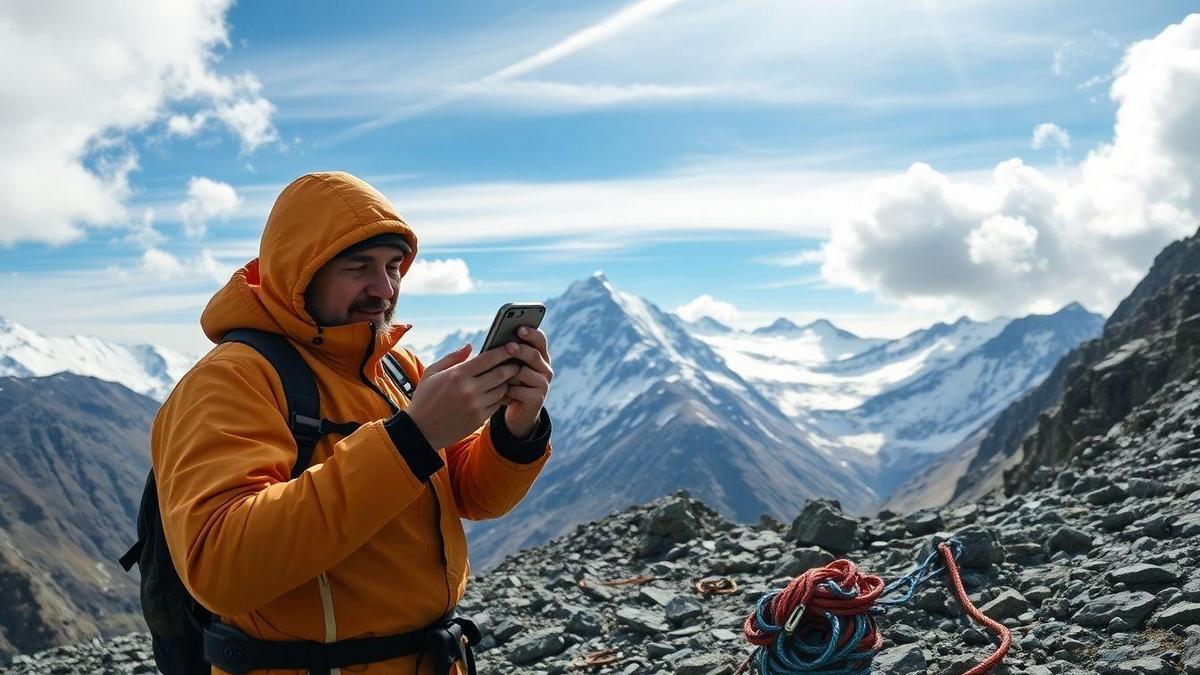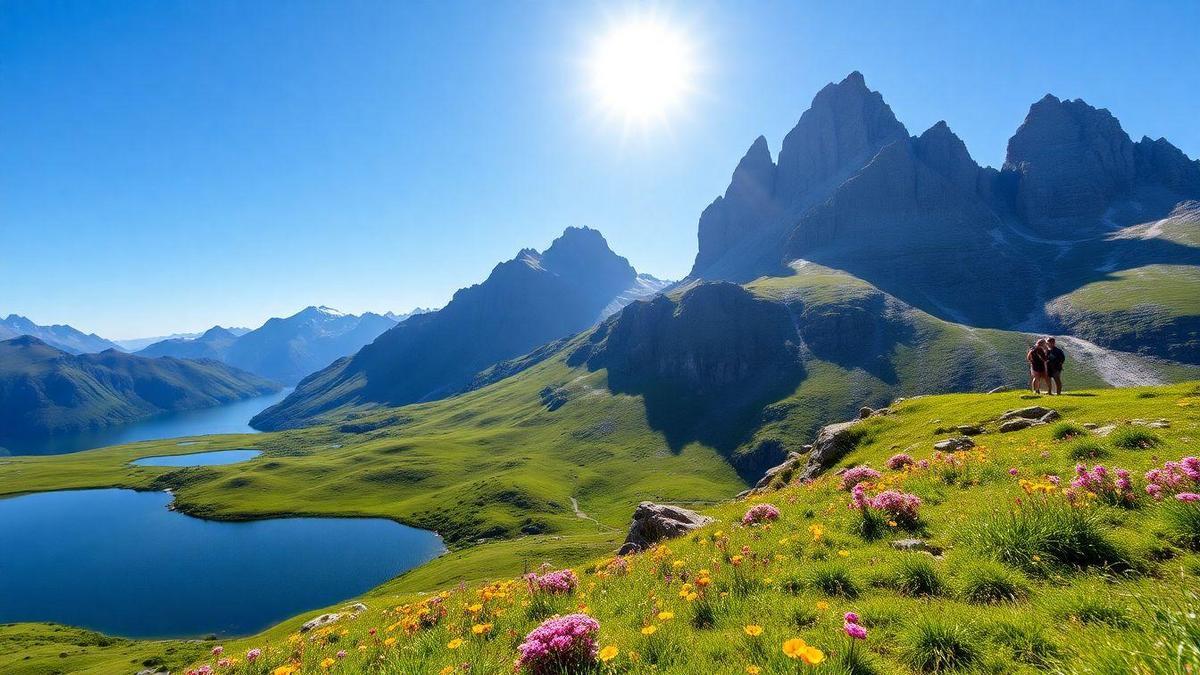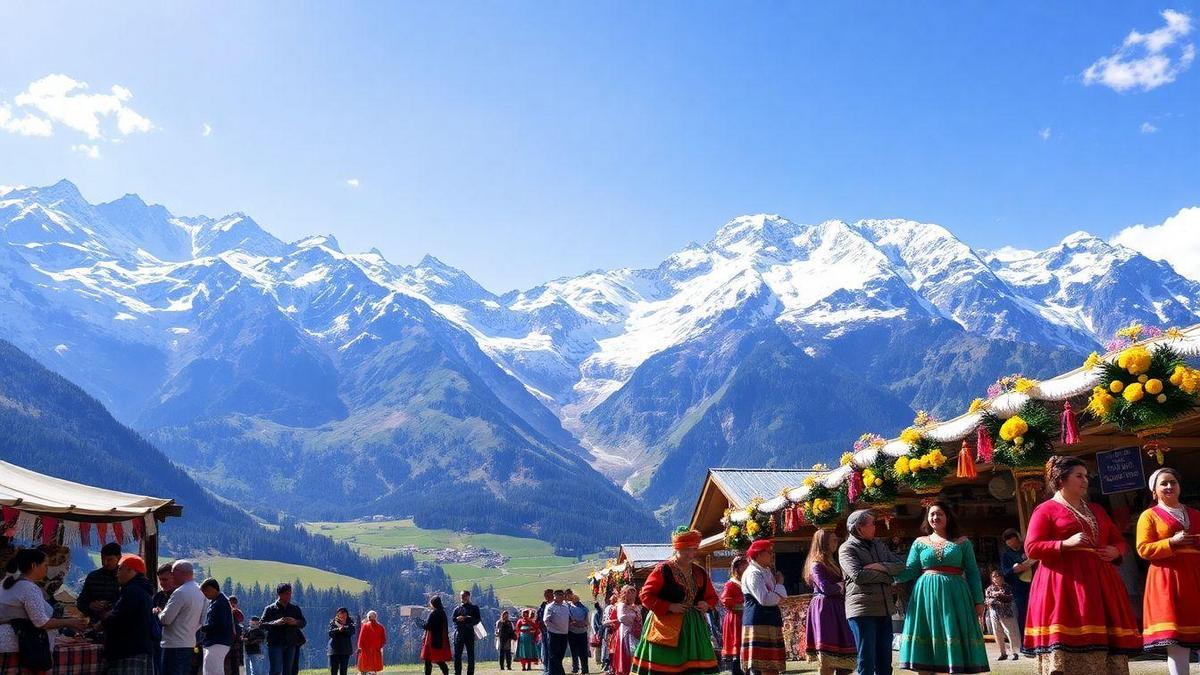
Understanding Weather Hazards in Mountain Climbing
Common Weather Hazards You Should Know
When you’re climbing a mountain, weather hazards can turn a fun adventure into a risky situation. Here are some common ones to be aware of:
- Lightning: This can strike suddenly, especially in open areas.
- High Winds: Strong winds can make climbing difficult and even dangerous.
- Rain and Snow: These can cause slippery surfaces and reduce visibility.
- Temperature Drops: It can get cold quickly, leading to frostbite or hypothermia.
How Weather Affects Your Climbing Experience
Weather plays a huge role in how enjoyable and safe your climb will be. For instance, sunny skies can boost your mood and energy, while sudden storms can bring anxiety and danger.
Here’s a quick look at how different weather conditions impact your climb:
| Weather Condition | Impact on Climbing |
|---|---|
| Clear Skies | Great visibility and morale |
| Rain | Slippery trails and reduced visibility |
| Snow | Increased risk of avalanches |
| Fog | Hard to navigate and increased risk |
Recognizing Signs of Bad Weather
Knowing how to spot bad weather can save your life. Keep an eye out for these signs:
- Dark Clouds: If you see dark clouds rolling in, it’s time to reconsider your plans.
- Sudden Wind Changes: A shift in wind can signal an incoming storm.
- Temperature Drops: If you suddenly feel cold, bad weather might be on the way.
- Animal Behavior: Animals often sense changes in the weather before humans do.
By being aware of these signs, you can make smart decisions and avoid getting caught in a storm.
Essential Weather Precautions for Safe Climbing Trips
Preparing for Sudden Weather Changes
When you’re climbing a mountain, sudden weather changes can catch you off guard. One moment, the sun is shining, and the next, you’re facing a snowstorm. To stay safe, you should always be ready for these surprises. Dress in layers so you can adjust quickly. If it gets hot, you can take off a layer; if it’s cold, you can add one back on.
Tip: Carry a lightweight, waterproof jacket. It can be a lifesaver when the skies turn gray.
The Importance of Checking Weather Forecasts
Before you hit the trail, checking the weather forecast is a must. It’s like looking at a map before a journey. Knowing what to expect can make a big difference in your climbing experience. Look for updates on temperature, wind speed, and any storm warnings.
Example: If the forecast says rain, you might want to postpone your trip or pick a different route.
Tools to Monitor Mountain Weather Conditions
To keep an eye on the weather while you climb, use some handy tools. Here are a few to consider:
| Tool | Use |
|---|---|
| Smartphone Apps | Download weather apps for real-time updates. |
| Portable Weather Radio | Carry a small radio to listen to forecasts. |
| Altimeter | Some altimeters can track changes in weather based on altitude. |
These tools can help you stay informed and make better decisions on your climb. Remember, being prepared is your best bet for a safe and enjoyable adventure.
Climbing Gear for Weather Protection
Choosing the Right Clothing for Different Weather
When you’re heading out to climb a mountain, choosing the right clothing can make all the difference. The weather can change faster than you can say summit, so being prepared is key.
- Layer Up: Always wear layers. Start with a moisture-wicking base layer to keep sweat away. Add an insulating layer like fleece for warmth, and finish with a waterproof outer layer to shield you from rain or wind.
- Fabric Matters: Look for materials that are breathable and quick-drying. Avoid cotton—it absorbs moisture and can leave you cold.
- Accessories Count: Don’t forget a warm hat, gloves, and a scarf. These small items can keep you cozy and protect you from the biting cold.
Must-Have Gear for Weather Safety
Having the right gear is like having a safety net. Here are some must-have items to keep you safe when the weather turns nasty:
- Rain Jacket: A lightweight, waterproof jacket is essential.
- Gaiters: These help keep mud and snow out of your boots.
- Emergency Blanket: It’s small but can keep you warm if you get stuck.
- Headlamp: If the weather delays you, a good light source is crucial.
| Gear Item | Purpose |
|---|---|
| Rain Jacket | Protects from rain and wind |
| Gaiters | Keeps feet dry from snow and mud |
| Emergency Blanket | Provides warmth in emergencies |
| Headlamp | Ensures visibility in low light |
How Gear Can Save Your Life in Bad Weather
You might think gear is just about comfort, but it can actually save your life. Imagine you’re halfway up a mountain, and the skies suddenly darken. If you have a good rain jacket, you can stay dry and warm. If you get lost, your headlamp can guide you back to safety.
Real-life stories abound of climbers who faced severe weather and survived thanks to their gear. It’s a reminder that what you wear and carry can mean the difference between a fun adventure and a dangerous situation.
Temperature Changes and Their Impact on Climbing
Understanding Temperature Drops at Altitude
When you climb a mountain, temperature drops can hit you like a ton of bricks. As you go higher, the air gets thinner and colder. For every 1,000 feet you climb, the temperature can drop about 3.5°F (2°C). This means that if you start your climb at a cozy 70°F, you might find yourself battling the cold at 50°F or lower at the summit.
Imagine this: you’ve packed your gear, excited for the adventure, but as you ascend, you start to feel the chill creeping in. It’s essential to keep this in mind, as cold temperatures can lead to serious issues like hypothermia or frostbite. Knowing how the temperature can change as you climb helps you prepare better.
How to Dress for Temperature Variations
Dressing right is key to staying warm while you climb. Here’s a simple way to think about it: layering is your best friend. Here’s how to do it:
- Base Layer: This layer should wick moisture away from your skin. Think of materials like merino wool or synthetic fabrics.
- Middle Layer: This is where you add insulation. Fleece or down jackets work great here.
- Outer Layer: This layer protects you from wind and rain. Look for waterproof jackets or shells.
Here’s a quick table to help you visualize:
| Layer Type | Purpose | Material Examples |
|---|---|---|
| Base Layer | Wicks moisture | Merino wool, synthetic |
| Middle Layer | Insulation | Fleece, down |
| Outer Layer | Protection from elements | Waterproof jackets |
Tips for Staying Warm During Climbs
Staying warm while climbing is not just about the clothes you wear. Here are some practical tips to keep the cold at bay:
- Keep Moving: When you stop, your body cools down quickly. Take short breaks and keep your blood flowing.
- Stay Hydrated: Drinking water helps maintain your body temperature. Even in the cold, you need to drink up!
- Eat Well: Snacks like nuts and energy bars can fuel your body and keep your energy levels up.
- Use Hand Warmers: These little packets can be lifesavers. Stick them in your gloves or pockets for extra warmth.
By following these tips and dressing appropriately, you can tackle those chilly mountain climbs with confidence.
Storm Preparedness for Mountain Trips
What to Do Before a Storm Hits
When you’re gearing up for a mountain adventure, pay attention to the weather. Before you set out, check the forecast. Look for any signs of storms or sudden weather changes. Here are some steps you can take to stay safe:
- Plan your route: Choose trails that are safe and away from high-risk areas like ridges or open fields.
- Pack smart: Bring gear that can handle rain and wind. Waterproof jackets, extra layers, and sturdy boots are key.
- Inform someone: Let a friend or family member know your plans. Share your route and expected return time.
- Set a turnaround time: Decide in advance how long you’ll hike. If the weather turns, it’s time to head back.
Safe Practices During a Mountain Storm
If you find yourself caught in a storm, remember these safety tips:
- Seek shelter: Look for a safe place to wait it out, like a dense forest or a low area.
- Stay low: If you’re on a mountain, move down to a lower elevation. Higher ground can be dangerous during storms.
- Avoid metal: Stay away from metal objects, like poles or equipment. They can attract lightning.
- Stay dry: Wet clothes can make you cold fast. Use your gear to stay warm and dry.
Creating a Storm Safety Plan for Your Trip
A solid safety plan can make all the difference. Here’s how to create one:
| Step | Details |
|---|---|
| 1. Weather Check | Look up forecasts before your trip. |
| 2. Emergency Kit | Pack items like a flashlight, first aid kit, and snacks. |
| 3. Communication | Carry a charged phone and know how to use it. |
| 4. Group Plan | Discuss what to do if a storm hits with your group. |
Creating a safety plan helps you stay calm and ready for anything. Remember, being prepared is your best defense against nature’s surprises.
Developing Mountain Weather Survival Skills
Key Skills Every Climber Should Learn
When you’re out there on the mountain, the weather can change in a heartbeat. Learning key skills can mean the difference between a fun adventure and a dangerous situation. Here are some essential skills you should master:
- Reading Weather Signs: Pay attention to the clouds. Dark clouds can mean rain or storms. If you see them forming, it’s time to make a plan.
- Using a Compass and Map: Knowing how to navigate with a map and compass is crucial. If visibility drops, you need to find your way safely.
- Setting Up Shelter: Sometimes, you might need to wait out a storm. Practice how to set up a quick shelter using a tarp or your backpack.
How to Make Quick Decisions in Bad Weather
When the weather takes a turn for the worse, you need to think fast. Here’s how to make smart decisions:
- Assess the Situation: Look around. Is the storm getting worse? Are you in a safe spot?
- Trust Your Instincts: If something feels off, it probably is. Don’t hesitate to turn back if conditions worsen.
- Communicate: Let your climbing partners know your thoughts. Talking it out can help everyone feel more secure.
Training for Weather-Related Emergencies
Training is vital. You don’t want to be caught off guard. Here’s how to prepare:
| Training Activity | Purpose |
|---|---|
| Mock Storm Drills | Practice decision-making under pressure |
| First Aid Courses | Learn how to handle injuries in bad weather |
| Navigation Workshops | Improve your map and compass skills |
These activities can help you feel more confident in challenging weather. Remember, the more prepared you are, the safer your mountain climbing trips will be.
Frequently Asked Questions
What are the main weather precautions for safe mountain climbing trips?
Always check the weather forecast before you go. Look out for storms, rain, or strong winds. Dress in layers to stay warm and dry. Stay updated during your climb.
How can I tell if the weather is too dangerous for climbing?
If you see dark clouds, feel strong winds, or hear thunder, it’s time to turn back. Trust your instincts. Your safety is the most important thing.
Should I avoid climbing in certain seasons?
Yes! Winter can be very risky with snow and ice. Summer storms can also pop up quickly. Spring and fall often have better weather for climbing.
What should I pack for bad weather on my mountain trip?
Bring a rain jacket, warm layers, and a hat. Pack good hiking boots too! Waterproof gear will help keep you safe and comfortable.
How can I stay safe if the weather changes suddenly while climbing?
Find a safe spot to rest. Monitor the sky for changes. Be prepared to turn back if conditions worsen. Your safety always comes first.


